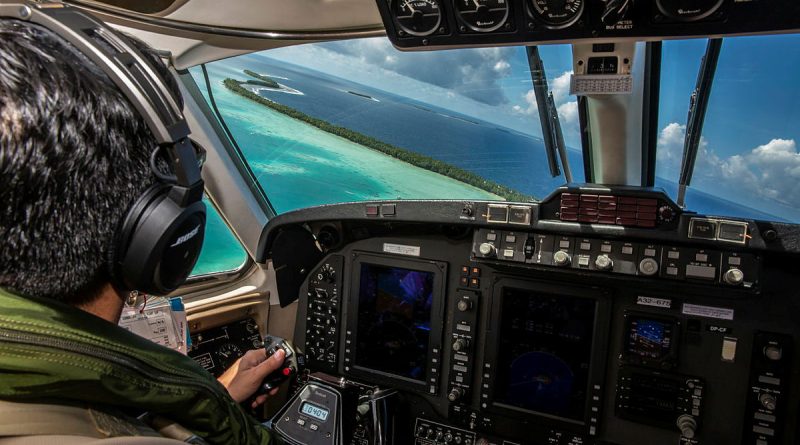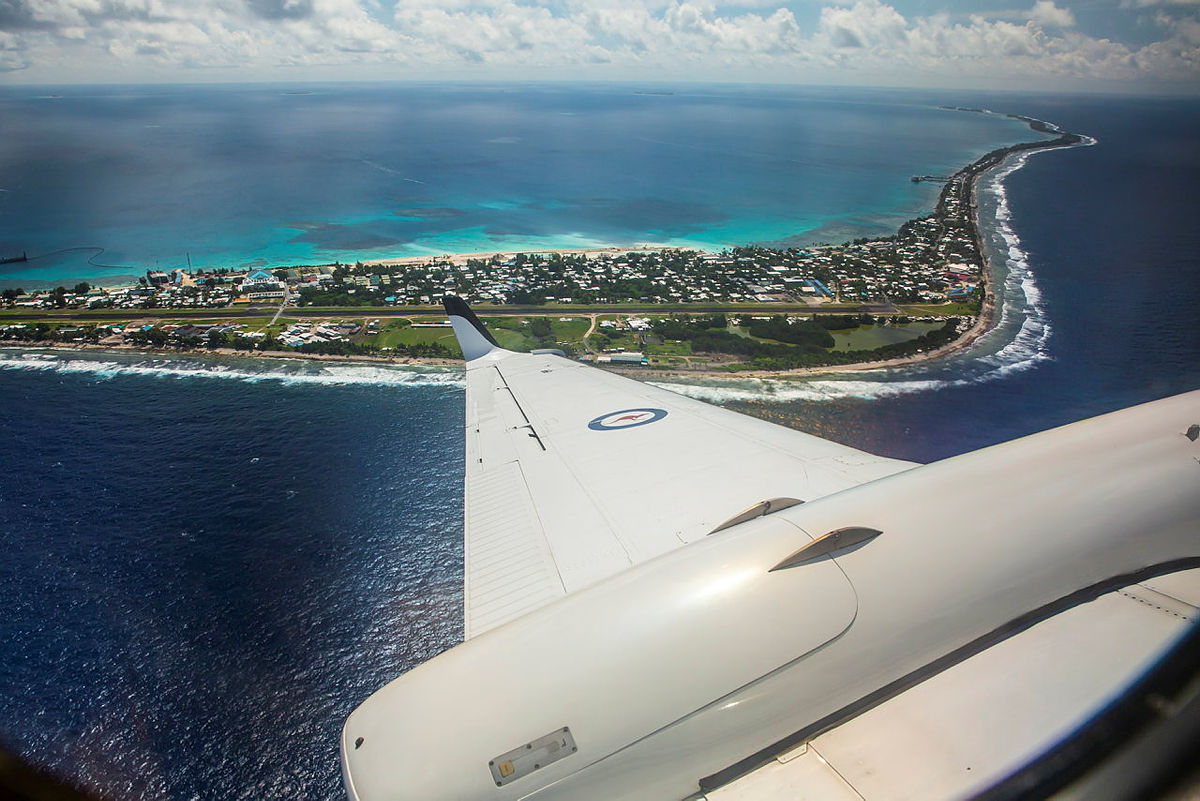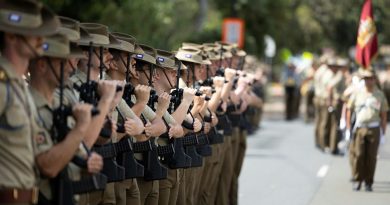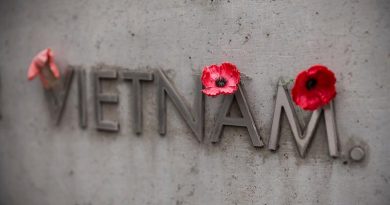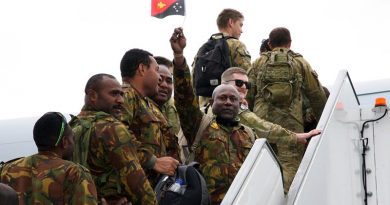Hunting for fish pirates

Funafuti Tower on the tiny Polynesian Island of Tuvalu clears the runway for a RAAF KA350 King Air to depart.
CAPTION: A Royal Australian Air Force KA350 King Air conducts maritime surveillance over Tuvalu during Operation Solania 23-3. Story by Corporal Melina Young. Photos by Corporal Melina Young.
32 Squadron pilot Flight Lieutenant Glenn Canfield has received reports from the Forum Fisheries Agency (FFA) regarding an unlicensed ship transiting through Tuvalu’s economic exclusion zone (EEZ).
“Aussie654, change of path, tracking to amended position 103 miles looking for suspicious vessel,” he says.
The aircraft providing maritime surveillance to help deter and detect illegal fishing during Operation Solania is cleared for takeoff from a runway less than three metres above sea level.
The runway is unlike anything you’ve seen before – at five in the afternoon it’s a busy hub that acts as a special meeting place for friends and family.
Motorbikes, scooters and cars track across it. Makeshift playfields are erected for volleyball and soccer, and athletics is practised where an aircraft was once parked.
A loud siren blasts about 10 minutes before a plane lands, notifying everyone, including the four-legged furry kind, to clear the runway.
Twenty minutes into the flight, the aircrew have visual contact on a vessel 20 miles away thanks to perfect sea conditions.
A three-point ‘rigging run’ will be executed in seven minutes to collect details on the vessel.
The call to contact gives the crew in the rear of the vessel enough time to prepare their equipment.
The pilots isolate the terrain warning system to begin the descent.
“Leaving 1000 for 250 feet,” the pilot says.
Once the aircraft is level the countdown begins: “Two minutes … 90 seconds … 30 seconds … 10 seconds … standby abeam … now now now.”
The ship can be seen from the right side of the aircraft.
The pilots mark the GPS location of the vessel while the crew at the rear take photos collecting the name and/or registration details of the ship.
Another two passes are executed to photograph all sides.
The crew look for vital information to pass on as part of the intelligence gathering role of Operation Solania, Island Chief 23-3.
Lines being trawled, nets in the water, and light helicopters and RHIB boats used to increase the effectiveness of fishing activities are evidence of suspected illegal fishing.
The goal is to catch the vessel of interest in the act of operating outside of its licensees or approvals.
The four-hour mission can patrol an average of up to 30,000 square nautical miles.
At the end of the day, imagery is sent to the FFA for analysis and further action where required.
Flight Lieutenant Cannfield has done about a dozen Operation Solania missions and said he still enjoys working in a maritime role.
“It’s one of my favourite kind of missions – I love getting out and seeing the different countries and their people and meeting up with communities we engage with,” he said.
“The locals in Tuvalu were very welcoming and engaging, the kids are fantastic. We’ll see them in the street and hand out RAAF roundel pins and they love it.
“As an instructor, I enjoy bringing our pilots out to countries like Tuvalu, show them the left and right of arc, introduce them to a new world and teach them how to do the job. It’s one of the fun parts of my role.”
CAPTION: A Royal Australian Air Force KA350 King Air returns to Tuvalu after conducting maritime surveillance over the nation’s exclusive economic zone during Operation Solania 23-3.
.
.

.
.

